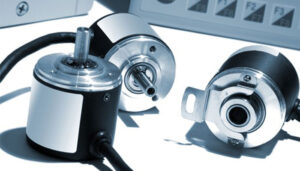Encoder
An encoder is typically used to detect and receive linear and rotating motion and convert it into a digital signal. In fact, an encoder (encoder) provides a specified value of a pulse in a rotation of the encoder. An excellent encoder (an incremental encoder) can be used in the position and speed of the application feedback engine, which includes servo / light, industrial or heavy applications. The types of encoder can be classified into: incremental encoder, rotary encoder and heavy duty encoder, absolute encoder, programmable encoder and linear encoder. To get technical information about the types of encoders and catalogs of the encoder, you can find the information you need in the encoder articles section and refer to each section of the encoder types in the encoder products section.

What should you consider when buying an encoder?
What should you consider when buying an encoder?
Key factors to consider when buying an encoder include: encoder type (rotary or linear), accuracy and resolution, output type (digital or analog), readout technology (optical, magnetic, capacitive), temperature range, power supply and power consumption, operating environment conditions (humidity, dust, vibration), connections and interfaces, size and weight, and price and maintenance costs. Rotary encoders are suitable for rotary motion and linear encoders for linear motion. Higher resolution leads to greater accuracy in measurement, and the choice of output type should match your application needs. We will discuss each of these in turn.
Encoder type (rotary or linear): The choice of encoder type depends on the type of motion (rotary or linear) and your specific application.
Accuracy and resolution: The accuracy and resolution of the encoder determines how accurately the encoder can measure motion. High resolution means more accurate measurements.
Output type (digital or analog): Digital output is suitable for more precise applications and computer-based controls, while analog output may be used in simpler applications.
Reading technology (optical, magnetic, capacitive): Optical encoders have high accuracy but can struggle in dirty environments. Magnetic encoders are more resistant to contamination.
How to Choose the Right Encoder?
Choosing the right encoder for a specific application requires consideration of several factors. First, determine the type of motion (rotary or linear) and the accuracy required, as these are the most fundamental criteria in encoder selection. In addition, motion speed and environmental conditions such as dust, humidity, and vibration must also be considered to ensure optimal performance. Choosing the output type that is compatible with your controller, as well as setting a budget based on the different types of encoders, are the final steps in the selection process. We will explain each of these steps in more detail below.
contact us on WhatsApp at 09890337892426.





